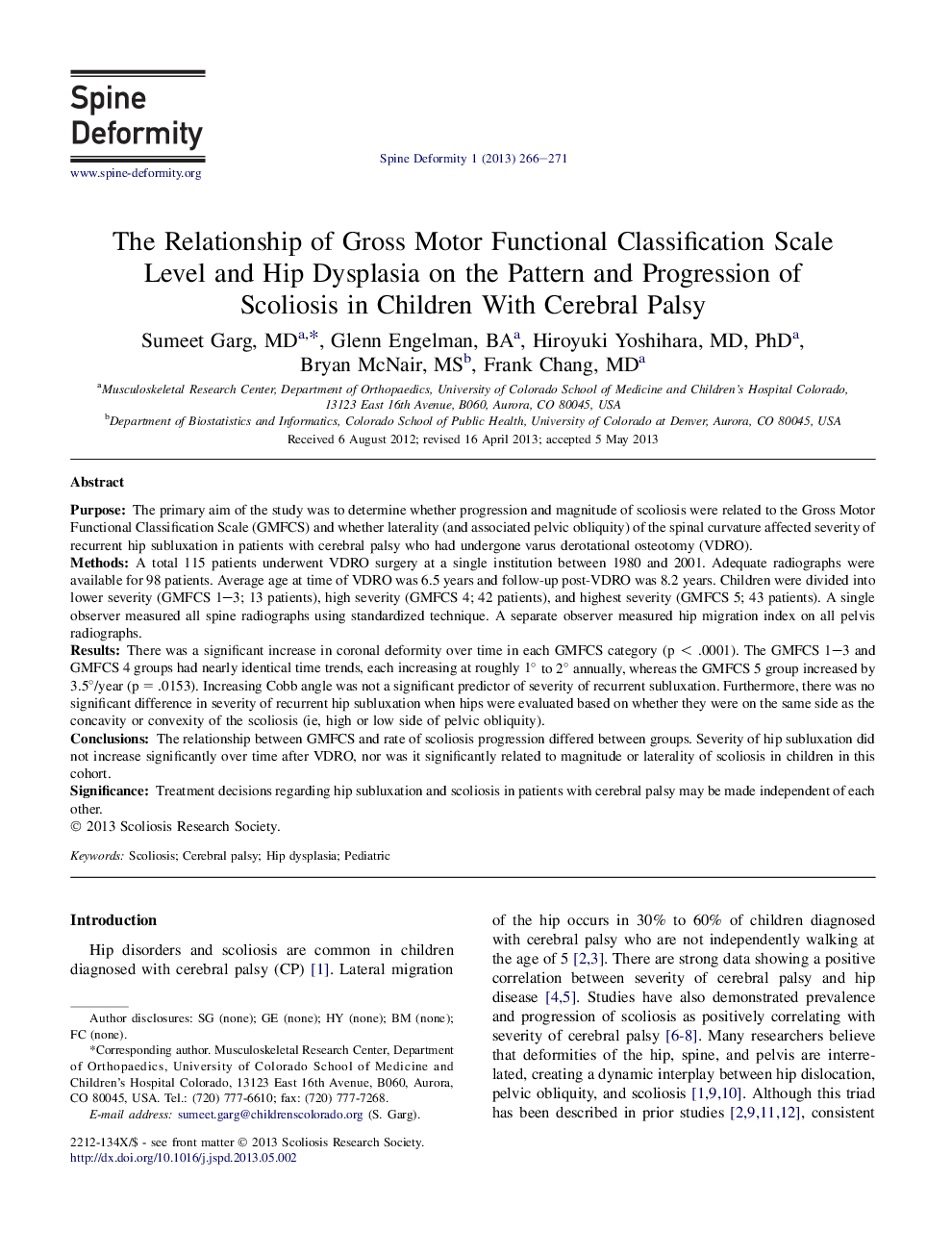| کد مقاله | کد نشریه | سال انتشار | مقاله انگلیسی | نسخه تمام متن |
|---|---|---|---|---|
| 4095688 | 1268544 | 2013 | 6 صفحه PDF | دانلود رایگان |

PurposeThe primary aim of the study was to determine whether progression and magnitude of scoliosis were related to the Gross Motor Functional Classification Scale (GMFCS) and whether laterality (and associated pelvic obliquity) of the spinal curvature affected severity of recurrent hip subluxation in patients with cerebral palsy who had undergone varus derotational osteotomy (VDRO).MethodsA total 115 patients underwent VDRO surgery at a single institution between 1980 and 2001. Adequate radiographs were available for 98 patients. Average age at time of VDRO was 6.5 years and follow-up post-VDRO was 8.2 years. Children were divided into lower severity (GMFCS 1–3; 13 patients), high severity (GMFCS 4; 42 patients), and highest severity (GMFCS 5; 43 patients). A single observer measured all spine radiographs using standardized technique. A separate observer measured hip migration index on all pelvis radiographs.ResultsThere was a significant increase in coronal deformity over time in each GMFCS category (p < .0001). The GMFCS 1–3 and GMFCS 4 groups had nearly identical time trends, each increasing at roughly 1° to 2° annually, whereas the GMFCS 5 group increased by 3.5°/year (p = .0153). Increasing Cobb angle was not a significant predictor of severity of recurrent subluxation. Furthermore, there was no significant difference in severity of recurrent hip subluxation when hips were evaluated based on whether they were on the same side as the concavity or convexity of the scoliosis (ie, high or low side of pelvic obliquity).ConclusionsThe relationship between GMFCS and rate of scoliosis progression differed between groups. Severity of hip subluxation did not increase significantly over time after VDRO, nor was it significantly related to magnitude or laterality of scoliosis in children in this cohort.SignificanceTreatment decisions regarding hip subluxation and scoliosis in patients with cerebral palsy may be made independent of each other.
Journal: Spine Deformity - Volume 1, Issue 4, July 2013, Pages 266–271